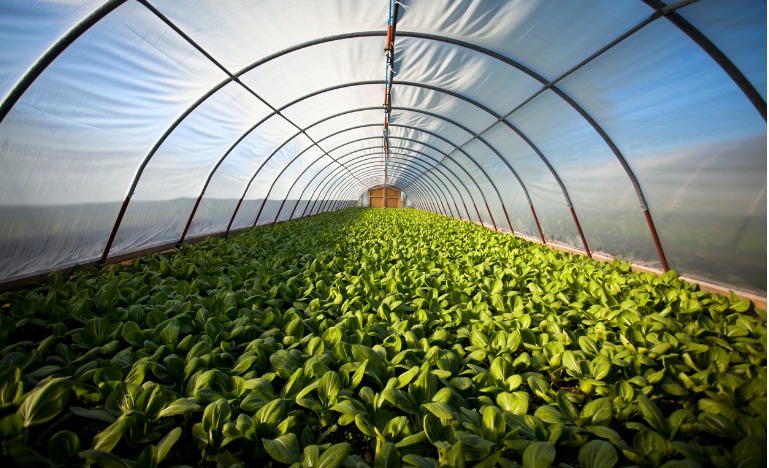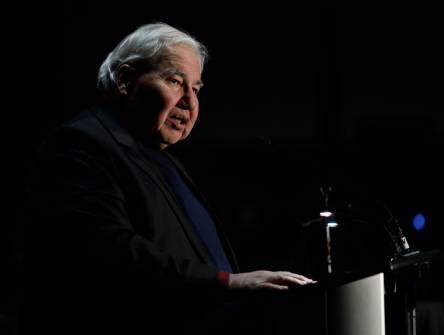Canada's food future
Reforming our food systems to make them sustainable will require lawmakers to take the long view.

When it comes to food policy in Canada, we have yet to reach a "Victorian sewage moment," a time when the government of the day can no longer ignore problems and is forced to act.
In the summer heatwave of 1858, London's smell was so foul — the so-called Great Stink — that Parliament was finally persuaded to ignore the "sewer skeptics" and legislate a costly and complex solution that ultimately changed the health of society forever.
To what extent Canada's food system needs reform is a matter of debate. In any case, few expect the Trudeau government to move quickly, even though it sits at the heart of our current health, social and climate emergencies. Even the pandemic hasn't greatly motivated legislators to transition to a more sustainable food system.
"I'm not sure what will convince [the government] except a complete calamitous collapse or an imminent one, which is what the pandemic was," says Roderick MacRae, associate professor of environmental and urban change at York University. "The dilemma is our environmental and health problems are slow emergencies. Because they're slow and the impact is dispersed and the actions to address are multifaceted, we don't have the skills to manage and implement change in such a scenario."
The United Nations defines a sustainable food system as one "that delivers food and nutrition security for all in such a way that the economic, social and environmental bases to generate food security and nutrition for future generations are not compromised."
In Canada, problems in the food system — from production to retail to consumption — are many-fold and require the cooperation of a wide variety of stakeholders and jurisdictions to fix. Prices are soaring, helping send more than a million to food banks. At the same time, obesity rates continue to climb, fuelled by mountains of junk food sold at grocery stores and making the population even more susceptible to disease. Meanwhile, Western Canada is experiencing catastrophic back-to-back weather events that are being blamed on climate change. Soil health is an ongoing concern.
"We have agri-food related health, hunger, and ecological crises in this country, not to mention a farmer population that is highly indebted and suffering from high rates of mental illness," says Ryan Katz-Rosene, assistant professor of political studies at the University of Ottawa, in an email. "Each year, extreme weather causes lots of damage to Canadian agriculture, and that's expected to get worse as the planet warms further."
The government acknowledges that a longer-term vision is necessary. Two years ago, it released a Food Policy for Canada, with the mandate: "All Canadians should have access to safe, healthy, affordable, culturally appropriate and locally produced food." Last year, an advisory panel was appointed to guide the Ministry of Agriculture on food-related issues.
However, most observers question the government's commitment given that the various objectives pit social, economic and environmental aims against each other. On top of making the food system fairer and more sustainable, Canada also plans to be one of the world's top food producers by 2025.
"The federal government has yet to grapple with what the tradeoffs are," says Jamie Baxter, professor of law at Dalhousie University in Halifax. "To this point, the message is 'we can meet all these goals at the same time.' I'm quite skeptical that they can maintain this going forward."
Because the food system includes many different stakeholders with conflicting agendas, there is little consensus on priorities or goals. Indeed, public servants have been handed a seemingly impossible task given their limited resources and legislative powers. That's to help figure out a way to provide citizens with nutritious, good value, sustainably and fairly produced food that will also add to the nation's export coffers and not to climate woes. In Canada, systems are further complicated because agriculture is governed by both the federal and provincial governments.
The government is hardly a passive actor in the food sector. It is one of the most regulated industries in the country — the bread and butter of legal practitioners is helping farmers and food manufacturers navigate regulations. Food law contemplates labelling, safety licensing, trade, health claims, food additive law, animal welfare — not to mention the monitoring of revolutionary innovations like lab-grown meat. The state is also involved in the supply management of dairy, poultry, eggs. Canada spends hundreds of millions of dollars in subsidies in agriculture, even before Covid hit.
Not everyone thinks the current food system is as problematic as some activists and academics claim. For example, the pandemic's early supply chain complications were surprisingly short-lived, showing the network's resilience; adding restrictions would increase insecurity. While problems exist — obesity, vulnerable workers' rights, climate change, etc.— they should not be bundled together but tackled separately by relevant authorities.
"If you are worried about food price inflation, there are policies that can address that. If you are addressing climate change, that's a different set of policies," says Ryan Cardwell, a professor at the University of Manitoba Department of Agricultural Economics.
"I would push back against any grand scheme that would target all of these things because you will miss all of your targets doing that. The key is allowing producers, distributors, traders, etc., to respond to emerging events because we don't know what those events are going to be. "
The current system provides most Canadians with the widest possible choice at the best possible prices. "If you walk into any supermarket, the selection and affordability of food are absolutely astonishing," Cardwell adds.
In many categories, Canada is well regarded compared with its peers. It sits in the global top ten in The Economist Impact's Global Food Security Index (GFSI), which measures the drivers of food security in 113 countries, based on affordability, availability, quality and safety, and natural resources and resilience.
Even so, calls for changes pre-date the pandemic, and not just from Canadian activists. Almost a decade ago, the UN's right-to-food envoy chided Canada about hunger and poor diets within its borders.
While Ottawa largely dismissed the report at the time, evidence of systemic problems has become difficult to ignore. Nearly 1.25 million homes are considered "food insecure," according to Statistics Canada. At the same time, two-thirds of Canadians over the age of 18 are overweight or obese; about 30% of children fall into this category. While the government has made commitments to develop a national school food program, Canada is currently the only member of the Group of Seven that still doesn't have one.
So what sorts of legal changes are being contemplated? Some proposed legislation is targeted, like the ban on junk food advertising for kids; it recently died on the Senate floor. Others call for much more far-ranging policies. For some, the entire system needs to be overhauled to transition to a more sustainable system. Others advocate for a "Right to Food". There are also those who think the most important government policy concerning affordable food would be a universal guaranteed income.
"Doing so would be a more powerful tool than any declaration of a right to food," says Grace Skogstad, professor of political science at the University of Toronto, in an email. "It is lack of income, not a lack of a right to food, that is the obstacle to food security."
Many experts acknowledge that positive change is happening in the food environment, albeit at a very slow rate. Apart from school food programs, some observers also point to the extra funding for preserving wetlands, the adoption of climate-friendly farming practices and clean-energy equipment. Some indicators, like soil organic matter — a key measure of soil health — are improving.
Particularly welcomed is the composition of the Food Policy for Canada advisory panel and the fact that interest in food law is growing.
"It's an exciting selection of people," says Nadia Lambek, assistant professor at Western Law School, regarding the panel. "There's been a real explosion of interest in how law governs food systems. That wasn't the case before. The challenge is that people have diametrically opposed views on both what the problems facing our food systems are and how to solve them."
Canada is not alone in re-thinking its rules governing the food system. Many jurisdictions are considering changes, particularly in light of the agri-food industry's effect on climate change. Globally, food production, packaging, and distribution contribute more than one-third of man-made greenhouse gases. The EU recently ratified its Farm to Fork plan, which aims to reduce pesticide and fertilizer use by 2030 and increase organic production to a quarter of farmland.
But there are big stumbling blocks to change, including powerful food lobbies with deep pockets, governments unwilling to risk financial losses and an apathetic public. We are now facing three concurrent pandemics — obesity, undernutrition, and climate change — and few are optimistic that governments are ready to tackle these problems, according to a report in the medical journal The Lancet.
"This suggests the need to do something about all three," says Marion Nestle, Professor of Nutrition, Food Studies, and Public Health, Emerita, at New York University, in an email. "Good luck with that."


